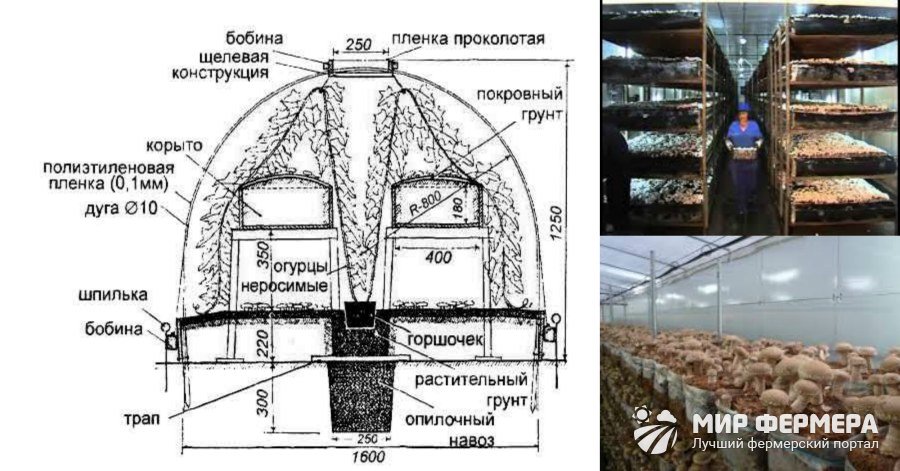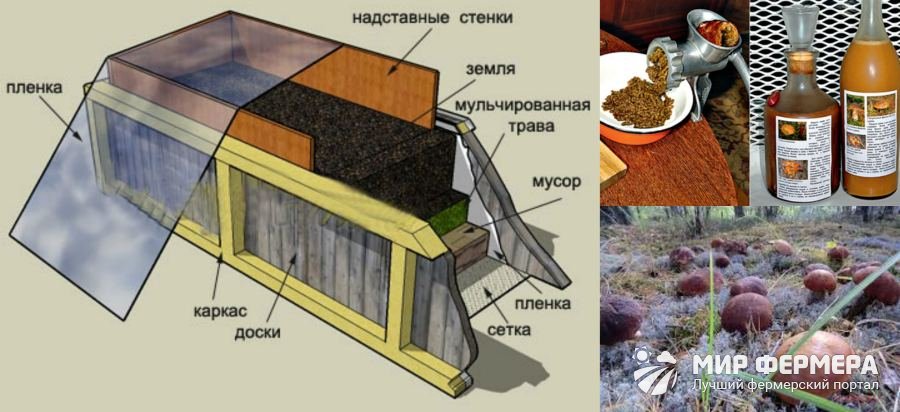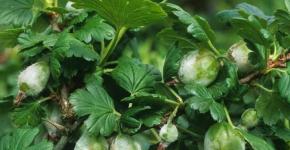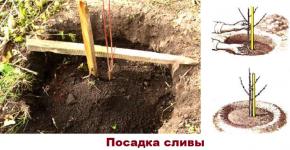How to grow and store porcini mushrooms
White mushroom is the most valuable forest find, because this variety is distinguished by its high taste. Growing porcini mushrooms at home is beneficial for several reasons, since the finished product can be used not only for self-consumption, but also for sale on the market.
How to grow porcini mushrooms in the country, what conditions need to be provided - read in this article. You will also learn about the main methods of growing mushrooms: from mycelium, spores or based on the symbiote tree.
Growing porcini mushrooms at home
Since porcini mushrooms are among the most valuable among other edible relatives, their cost is quite high in the market, and therefore their cultivation at home is profitable as a business (Figure 1).
 Figure 1. Growing at home
Figure 1. Growing at home In addition, it is much more pleasant and much less tiring to fill a basket on your own personal plot than in the forest, where not everyone has the opportunity to get out. To grow porcini mushrooms in your backyard, you need accuracy and perseverance, as well as some baggage of theoretical knowledge that this article will equip you with.
Peculiarities
When planning cultivation on a personal plot, one should not forget that porcini mushrooms cannot exist without symbiosis with trees. Therefore, it is obligatory to have several separate trees: pine, aspen, birch, oak or spruce.
Note: In this case, the age of the trees should be at least 8-10 years. An area adjacent to the forest is ideal for these purposes.
Do not forget that they do not grow in any land, but only in a composition similar to that from which the mycelium or fruit body was taken. Boletus is quite whimsical not only to the soil, but also to weather conditions, for example, they do not tolerate excessive rainfall and do not grow well in the shade. In addition, for stable growth, they need a constant temperature without sudden changes and cannot do without fresh air. All these features need to be known in order to clearly understand what requirements home cultivation should satisfy.
Conditions
No matter how great your desire to grow mushrooms at home, but without the conditions listed below, it will be extremely difficult to do this.
So, when you are going to grow mushrooms, you need:
- Have an appropriate territory: for these purposes, a greenhouse, a basement, a storage room, and finally, the most ordinary personal plot will do. The main condition is that the place you have chosen should be well ventilated.
- Be able to maintain the required temperature (+ 8 + 12 degrees).
- Provide a constant high level of humidity (90% -92%) in the room.
It is also necessary to take care of artificial light sources if the cultivation will be carried out in a basement or storage room without windows. It should be borne in mind that mushrooms do not tolerate too bright light.
Growing technology
It is possible to grow porcini mushrooms at home both from the mycelium and from the spores extracted from the mushroom cap (Figure 2).
To get spores, you need to break the cap of a mature specimen into several pieces (even wormy and dry material will do) and soak them in cold water for 24 hours. You can add a little sugar to create a nutrient medium (15 pieces per bucket). During this time, the water will be saturated with spores and turn into a spore infusion. This solution is poured over the area previously cleaned from the top layer of sod.
Note: When removing the top layer of the soil, try not to damage the tree roots, as they play an important role in the development of mycelium. In this way, they are sown from late May to early June (for southern regions), or from late August to early September (for northern regions).
Follow-up care consists of regular, careful watering. It is best to pour water on tree trunks rather than on the ground to prevent the seeded mycelium from being washed away. Moreover, the first harvest will appear next year.
To intensify the growing process, you can use another method, that is, dilution with mycelium. It can be easily purchased at specialty stores. Under the mycelium, a small pit is pulled out, having a depth of 20-30 cm and a width of up to 2 m, then it is filled with layers of nutrient substrates. The first to lay a layer of tree bark and fallen leaves, 7-10 cm thick. This nutrient mixture must be prepared in advance (one month before the expected planting). On top of it, humus or ordinary soil crumbles, into which the mycelium is sown. From above, the sown soil is laid with a layer of nutrient mixture 3 cm thick, and only after that the entire area is covered with ordinary earth.
 Figure 2. Features of growing at home
Figure 2. Features of growing at home If you are the owner of a home greenhouse or basement, then in such conditions, spores are sown in prepared boxes, which are placed on racks. At the same time, the room should remain twilight and a high level of humidity, which can be achieved with the help of containers with water placed among the boxes. In addition, care must be taken to ensure that it is possible to regularly ventilate the room and maintain a constant air temperature.
Growing porcini mushrooms at home: video
You can learn how to grow porcini mushrooms in the country from the video below. It shows in detail the process of growing and preparing the site for their cultivation.
Cultivation of porcini mushrooms in personal plots
The success of growing on a personal plot directly depends on how much the conditions you create will be similar to natural ones. Therefore, start by choosing a site - it should be located in close proximity to the trees that boletuses love so much: oak, beech, birch, spruce, pine.
Make sure that the area you have chosen is not waterlogged or heavily shaded. Then, depending on the breeding method you choose, prepare the site accordingly by removing the top layer of turf or digging a pit.
Carefully familiarize yourself with the technology for obtaining spores from fruit bodies or buy a ready-made mycelium. Sow the planting material in accordance with the technology of each of the methods. With careful care, you will have the opportunity to get a good harvest of fragrant boletus.
Peculiarities
Growing porcini mushrooms at home is considered quite simple, but some nuances and rules still need to be taken into account.
When breeding in your own personal plot, you should know some of the features:
- If spores are used as planting material, then preliminary soil preparation consists in freeing the space around the tree from the upper sod layer of earth 15-20 cm thick. The soil is exposed in such a way that a circle with a diameter of one and a half meters is formed around the tree trunk. The removed layer is used to cover the sown area.
- When breeding using ready-made mycelium, a layer of nutrient mixture is placed on the bottom of a specially dug pit, be it rotted compost, peat or fallen leaves mixed with tree bark.
- Pieces of mycelium are laid out on a fertile substrate in a checkerboard pattern, observing a distance between the cells of 30-35 cm.
- The planted mycelium is covered with a layer of soil that remains from the excavation of the pit.
- The area seeded with mycelium should be watered very carefully, trying not to wash out the soil.
- To maintain the required humidity level, it is recommended to mulch the area with straw, spreading it out in a layer of 25-35 cm.
- With the onset of cold weather, it is necessary to cover the area with moss, branches of coniferous trees or a layer of fallen leaves for additional protection from frost. This shelter is removed with the arrival of spring.
Knowing well the peculiarities of cultivation and owning the technology, it is possible to achieve that the home mycelium will bear fruit within 3-5 years.
Conditions
In order to get the largest possible yield in your own backyard farm, you need to know well their natural growing conditions. This is the only way to bring home cultivation closer to natural.
Note: The easiest way, of course, is to grow mushrooms on a plot of land in the partial shade of deciduous trees such as beech, oak, birch, aspen, or under the shade of pines and firs. Here they will feel most comfortable, being in symbiosis with their "patrons".
It is much more troublesome to grow them indoors: greenhouse, basement. Here, only you are able to provide the proper conditions: a high level of humidity, and a constant temperature regime, and the necessary lighting and ventilation. All these aspects have already been covered in our article. Remember that meeting the right conditions can ensure your success in the fun of growing mushrooms at home.
How to grow porcini mushrooms in the country: video
You can find more details on growing porcini mushrooms in the country with an overview of the methods and features of the technology in the video.
It is quite simple to grow porcini mushrooms in greenhouses, for this you need to have some knowledge base.
It includes the nuances of preparing the structure itself and organizing the beds, as well as breeding methods. Let's consider these points in more detail.
Greenhouse preparation
To properly prepare a greenhouse for growing porcini mushrooms in it, you need to know under what natural and climatic conditions they ripen in nature (Figure 3).
As you know, these forest giants do not tolerate sudden changes in daily temperature and heavy rainfall. They prefer well-drained soils in warm, sunny or slightly shaded areas. You should try to reproduce the same conditions in your home greenhouse. Therefore, you will have to take care of maintaining a high level of humidity, observing the ventilation regime, maintaining a constant temperature regime, and shading from direct sunlight. And for this, your structure must have an appropriate design so that it is possible to effectively carry out all the necessary measures.
 Figure 3. Features of growing in a greenhouse
Figure 3. Features of growing in a greenhouse In addition, you will need additional equipment, for example, racks, boxes, water tanks, heaters, etc. Only after proper preparation of the greenhouse premises itself, you can start creating beds.
How to prepare the beds
The subtlety in creating beds for growing porcini mushrooms in a greenhouse is that they need a nutrient substrate identical to that in which it grows in natural conditions. Therefore, you cannot do with ordinary land from the garden or garden soil.
Forest and garden soil must be thoroughly mixed by adding steamed sawdust and a small amount of well-rotted manure to it. All this mixture must be infused for a week, and only then it can be filled in the boxes intended for growing. Porcini mushrooms are sown in one of two ways: mycelium or spores, each of which will be described below.
Growing from mycelium
The advantage of growing from mycelium is that you don't need to cook it yourself, but you can just buy it (Figure 4). With this method, the mycelium will yield a harvest much earlier than when grown from spores.
The laying of the mycelium should be preceded by preliminary preparation of the soil, which begins from the last days of May. When it comes to greenhouses, it is about creating compost for the seedling boxes. It is recommended to steam it immediately before filling for disinfection purposes.
 Figure 4. Rules for growing from mycelium
Figure 4. Rules for growing from mycelium The divided mycelium is placed on the prepared substrate in a checkerboard pattern, then covered with a thin layer of soil, abundantly spilled and covered with straw mulch. Further watering is repeated as necessary when drying out.
Growing up from spores
The technology of growing from spores is more troublesome, but no less interesting from this.
You need to start by collecting fully ripe specimens in the forest and separating the caps from them. In this case, both wormy and dry specimens can be used (Figure 5). The separated caps (at least 10) are soaked in a bucket of water for a day, gradually kneading them into a gruel. To create a nutrient medium, it is also recommended to add refined sugar to the water at the rate of 15 pieces per 10 liters of water.
 Figure 5. Features and rules of cultivation from spores
Figure 5. Features and rules of cultivation from spores The resulting spore solution is filtered, and the mushroom gruel is spread on a prepared nutrient substrate, sprinkled with peat and poured with water with spores remaining from filtering.
How to grow a porcini mushroom from a symbiote tree
The mycelium of the porcini fungus, which is in the soil, comes into contact with the roots of some deciduous and coniferous trees. By merging with them, it creates for them the conditions necessary for growth. Higher plants, in turn, provide the mycelium with ready-made food. This mutually beneficial process is called symbiosis (Figure 6).
Note: Since the boletus is in a symbiotic relationship with many trees, its appearance depends on the nature of the tree species, and if the mycelium can exist without a tree, then the fruit body does not develop without it. Therefore, a fairly large experience has been accumulated in growing boletus in natural conditions, that is, in the immediate vicinity of trees.
For example, in one of the methods, small pieces of mycelium are placed in recesses under the same species of trees under which it was dug, covered and moistened. The litter is kept moist by regular spraying.
 Figure 6. Growing symbiotes on trees at home
Figure 6. Growing symbiotes on trees at home You can also use the caps of mature specimens, the pieces of which are laid out on the loose forest floor. After 5 days, these pieces are removed, and the litter itself is moistened. Another method uses dried pieces of hats. Lifting the top layer of soil under the trees with a small spatula, lay 2-3 pieces of a dried cap. Then the litter is compacted and watered. Watering the soil around the trees with infusion of mushrooms is also practiced. In this case, the watering border runs from the tree trunk to the crown border.
All of these methods are not theoretically justified, but in practice, you can get a crop under favorable weather conditions as early as the next year after planting. The main rule is to choose a site similar to the place where the planting material was taken from, the composition of the soil, the nature of the undergrowth and grass cover, and the forest stand.
The author of the video will tell you how to properly plant boletus at home.
Shelf life of porcini mushrooms
It is recommended to store raw mushrooms in a cool place immediately after harvest, such as in the refrigerator, where they can retain their beneficial properties for 12 to 24 hours. It is advisable to process them as soon as possible, as prolonged storage raw can be hazardous to health.
 Figure 7. Methods for storing boletus
Figure 7. Methods for storing boletus Processed raw materials are stored in various ways: pickled, dried, frozen, salted (Figure 7). Jars of pickled boletus can be successfully stored in a cool, dark place throughout the year. The same shelf life for raw frozen mushrooms at a temperature of -18 degrees. But boiled frozen mushrooms can be stored in the freezer for no longer than a month.


